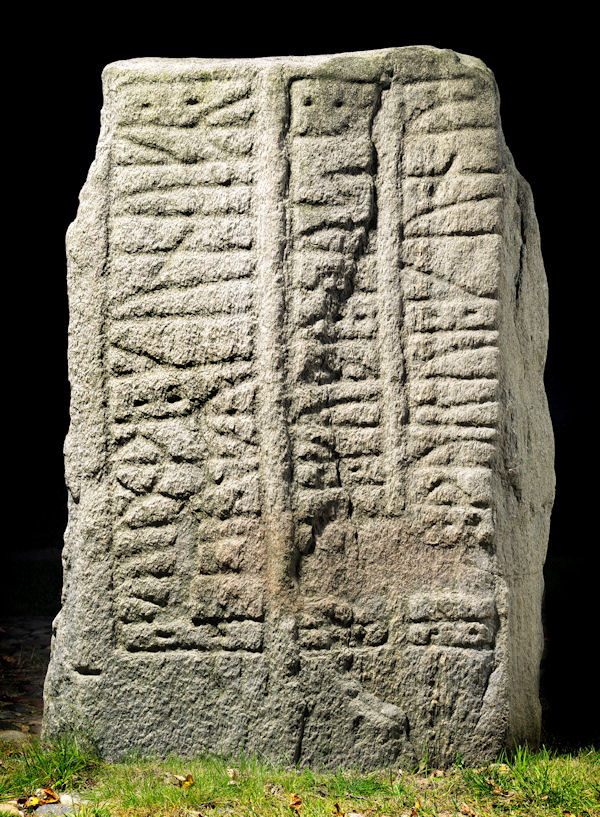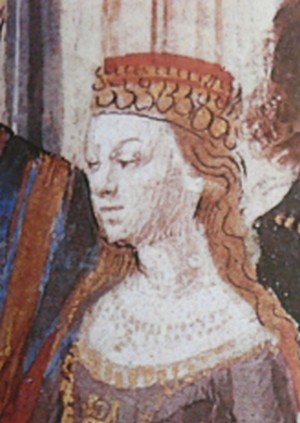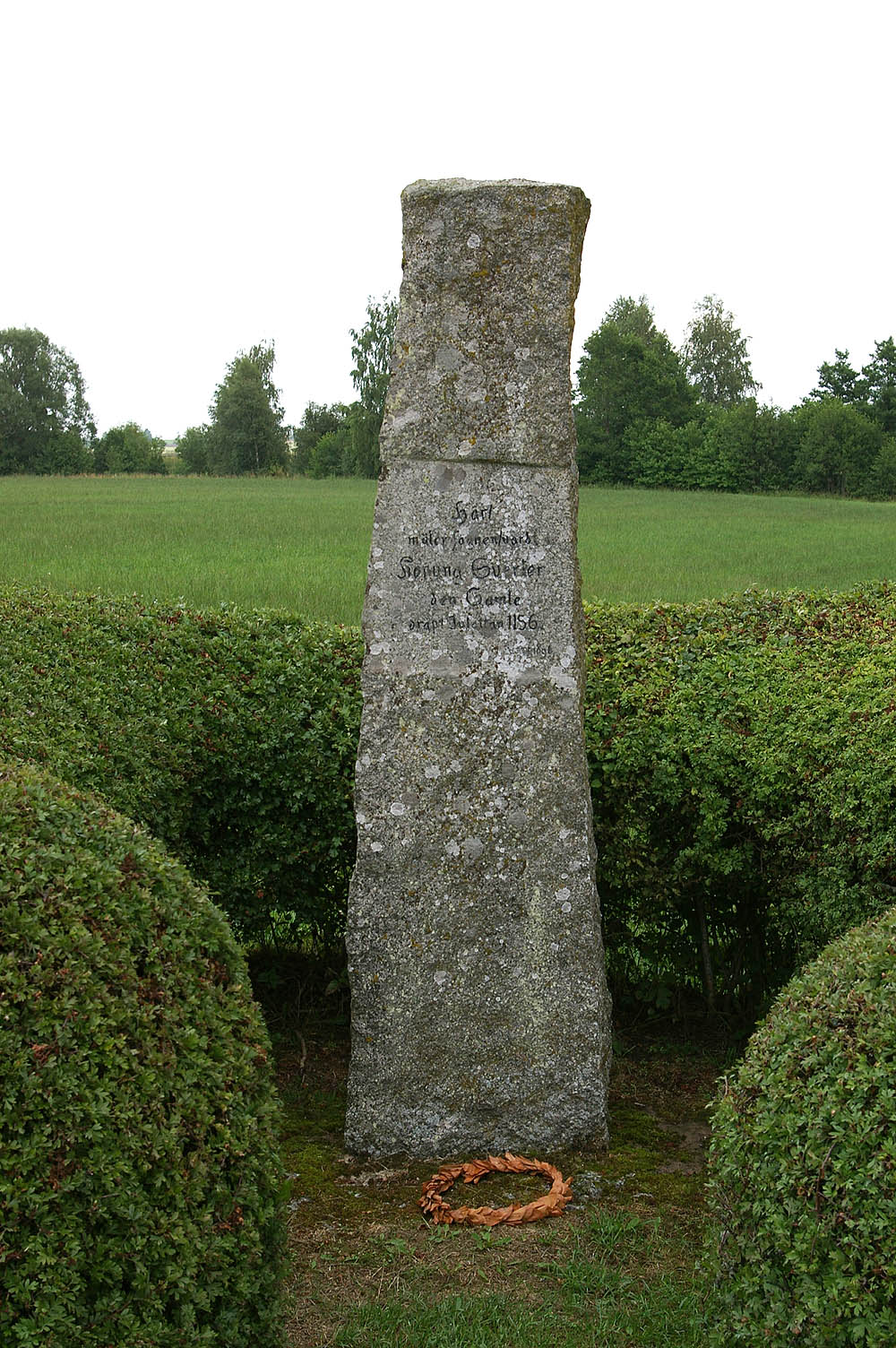|
Sophia Of Polotsk
Sophia of Minsk or Sophia of Polotsk (died 5 May 1198) was a Danish queen consort by marriage to King Valdemar I of Denmark, and a landgravine of Thuringia by marriage to Louis III, Landgrave of Thuringia. Life Origin Sophia was the daughter of Richeza of Poland, Queen of Sweden, Richeza of Poland, Dowager Queen of Sweden, from her second marriage to a man called "Valador", King in Poloni Land. The identity of her father is uncertain, it was either Volodar Glebovich, Prince of Minsk, Volodar of Minsk or , Prince of Novgorod and son of Vsevolod of Pskov. Both of them were Rurikids. The latter version would mean Valdemar the Great, Valdemar was married to his first cousin once removed, as Sophia's possible father Volodar was a nephew of Valdemar's mother Ingeborg of Kiev. Childhood Sophia spent a part of her childhood in Denmark, where her mother had been married to a Danish prince in her first marriage, and returned with her daughter when her second marriage was terminated. Soph ... [...More Info...] [...Related Items...] OR: [Wikipedia] [Google] [Baidu] |
List Of Danish Consorts
This list of Danish consorts includes each queen consort (wife of a reigning king) and each prince consort (husband of a reigning queen). Due to unions (personal union, personal and real union, real), the queens of 1380–1814 (effectively from 1406) were also queens of Norway, and the queens of 1389–1521/23 (effectively from 1406) were also (though with interruptions) queens of Sweden. The Australian-born Queen Mary of Denmark, Mary, wife of King Frederik X, became queen consort on 14 January 2024, following the abdication of Margrethe II. House of Knýtlinga House of Estridsen House of Griffin House of Palatinate-Neumarkt House of Oldenburg House of Schleswig-Holstein-Sonderburg-Glücksburg Notes and references See also * List of Danish monarchs * List of consorts of Schleswig and Holstein * List of consorts of Oldenburg * List of Norwegian consorts * List of Finnish consorts * List of Swedish consorts {{DEFAULTSORT:List Of Danish Consorts Danish roya ... [...More Info...] [...Related Items...] OR: [Wikipedia] [Google] [Baidu] |
Vsevolod Of Pskov
Vsevolod Mstislavich Monomakh (), the patron saint of the city of Pskov, ruled as Prince of Novgorod in 1117–32, Prince of Pereyaslavl (1132) and Prince of Pskov in 1137–38. Early life The eldest son of Mstislav the Great and Christina Ingesdotter of Sweden, Vsevolod was born in Novgorod during his father's reign as prince there (1088–1093, 1095–1117) and given the baptismal name Gabriel, or Gavriil. His maternal grandfather was King Inge the Elder of Sweden. The date of his birth is unknown, although the idea has been advanced that the event was commemorated by the Annunciation Church in the Marketplace, founded by Mstislav in 1103. He was enthroned as Prince of Novgorod after his father Mstislav Vladimirovich became Grand Prince of Kiev in 1117 and ruled Novgorod, with some interruption, until he was ousted by the Novgorodians in 1136. He was married to a Chernigovian princess in Novgorod in 1123 and his son, Ivan, was born there (he died in 1128). In 1123, Vs ... [...More Info...] [...Related Items...] OR: [Wikipedia] [Google] [Baidu] |
Eric X Of Sweden
Erik Knutsson (; – 10 April 1216), sometimes known as Eric X, was King of Sweden between 1208 and 1216. Also known as ''Erik the Survivor'' (), he was, at his accession to the throne, the only remaining son of King Knut Eriksson and his queen, whose name may have been Cecilia. Struggles for the throne Nothing is known about his youth, but he may have been born around 1180 in Eriksberg royal manor. When Erik's father, King Knut, died peacefully in 1195 or 1196, his four sons were youthful but not children. One of them had been hailed as heir to the throne by the grandees of the kingdom when Knut was still alive. Whether this was Erik we do not know, nor do the sources disclose the names of his three brothers. In spite of the precautions of King Knut, his sons were passed over in favour of Sverker Karlsson, the head of the rival dynasty of the Sverkers. Perhaps this was due to the influence of the mighty second-of-the-realm, Jarl Birger Brosa. As far as we know the successi ... [...More Info...] [...Related Items...] OR: [Wikipedia] [Google] [Baidu] |
William Of Winchester, Lord Of Lüneburg
William of Winchester (11 April 1184 – 13 December 1213), also called William of Lunenburg () or William Longsword, a member of the House of Welf, was heir to his family's allodial lands in the Duchy of Saxony after the deposition of his father, Duke Henry the Lion in 1180. Life William was the fifth and youngest son of Henry the Lion and Matilda, the eldest daughter of King Henry II of England and Eleanor of Aquitaine. He was born in Winchester, England during his father's exile; he probably remained there when Henry returned to Saxony and was raised at his uncle King Richard I's court. After his unsuccessful uprising, Henry had submitted to the Hohenstaufen emperor Frederick Barbarossa in 1181 and though he had to leave Germany, he could retain the Welf possessions around Lüneburg, Brunswick, and Haldensleben. He finally reconciled with Frederick's son and successor Emperor Henry VI in 1194 and surrendered his younger sons William and Otto as hostages for the payment ... [...More Info...] [...Related Items...] OR: [Wikipedia] [Google] [Baidu] |
Philip II Of France
Philip II (21 August 1165 – 14 July 1223), also known as Philip Augustus (), was King of France from 1180 to 1223. His predecessors had been known as kings of the Franks (Latin: ''rex Francorum''), but from 1190 onward, Philip became the first French monarch to style himself "King of France" (''rex Francie''). The son of King Louis VII and his third wife, Adela of Champagne, he was originally nicknamed () because he was a first son and born late in his father's life. Philip was given the epithet "Augustus" by the chronicler Rigord for having extended the crown lands of France so remarkably. After decades of conflicts with the House of Plantagenet, Philip succeeded in putting an end to the Angevin Empire by defeating a coalition of his rivals at the Battle of Bouvines in 1214. This victory would have a lasting impact on western European politics: the authority of the French king became unchallenged, while John, King of England, was forced by his barons to assent to Magna C ... [...More Info...] [...Related Items...] OR: [Wikipedia] [Google] [Baidu] |
Valdemar II Of Denmark
Valdemar II Valdemarsen (28 June 1170 – 28 March 1241), later remembered as Valdemar the Victorious () and Valdemar the Conqueror, was King of Denmark from 1202 until his death in 1241. In 1207, Valdemar invaded and conquered Bishopric of Lübeck, Lybeck and Duchy of Holstein, Holstein, expanding the Danish territories. His involvement in the Civil war era in Norway#The Second Bagler War and the Settlement of Kvitsøy, Norwegian succession led to the second Bagler War, temporarily settling the issue and making the Norwegian king owe allegiance to Denmark. He faced disputes with the papacy over the appointment of the Prince-Archbishop of Bremen and the Bishop of Schleswig. Valdemar's military campaigns included conflicts in northern Germany and the establishment of Danish Estonia, Danish rule in Estonia in 1219. His reign saw the adoption of a feudal system in Denmark and the creation of the Code of Jutland, which served as Denmark's legal code until 1683. Background He was t ... [...More Info...] [...Related Items...] OR: [Wikipedia] [Google] [Baidu] |
Roskilde
Roskilde ( , ) is a city west of Copenhagen on the Danish island of Zealand. With a population of 53,354 (), the city is a business and educational centre for the region and the 10th largest city in Denmark. It is governed by the administrative council of Roskilde Municipality. Roskilde has a long history, dating from the pre-Christian Viking Age. Its UNESCO-listed Gothic architecture, Gothic Roskilde Cathedral, cathedral, now housing 39 tombs of the Danish monarchs, was completed in 1275, becoming a focus of religious influence until the Danish Reformation, Reformation. With the development of the rail network in the 19th century, Roskilde became an important hub for traffic with Copenhagen, and by the end of the century, there were tobacco factories, iron foundries and machine shops. Among the largest private sector employers today are the IT firm BEC (Bankernes EDB Central) and seed company DLF (seed company), DLF. The Risø DTU National Laboratory for Sustainable Energy, Ris ... [...More Info...] [...Related Items...] OR: [Wikipedia] [Google] [Baidu] |
Canute VI Of Denmark
Canute VI (; c. 1163 – 12 November 1202) was King of Denmark from 1182 to 1202. Contemporary sources describe Canute as an earnest, strongly religious man. Background Canute VI was the eldest son of King Valdemar I of Denmark, Valdemar I and Sophia of Polotsk. His younger brother Valdemar II of Denmark, Valdemar was born in 1170. On 25 June 1170, at age 7, Canute was proclaimed and crowned co-king of Denmark with his father. Canute was crowned in the first coronation in Danish history by Archbishop Eskil of Lund at Ringsted. Reign Following his father's death in 1182, Canute became sole ruler and King of Denmark in 1182. at the Urnehoved Assembly (Danish: Landsting (Denmark), ''landsting'') and subsequently at the other assemblies throughout Denmark. He immediately faced a peasant uprising in Skåne. The peasants refused to pay Bishop Absalon's tithe. They met at the Skåne Assembly and chose Harald Skreng, one of Canute’s friends to represent them to the king to plead ... [...More Info...] [...Related Items...] OR: [Wikipedia] [Google] [Baidu] |
Siegfried III, Count Of Weimar-Orlamünde
Siegfried III, Count of Weimar-Orlamünde (1206) was a member of the House of Ascania and a ruling Count of Weimar-Orlamünde. He was the son of Count Herman I and his wife Irmgard. Herman I was son of Albert the Bear Count of Anhalt, Margrave of Brandenburg and Duke of Saxony. He was regarded as a supporter of the House of Hohenstaufen. He spent some time in Denmark. He married Sophie (1159 – ), a daughter of King Valdemar I of Denmark Valdemar I Knudsen (14 January 1131 – 12 May 1182), also known as Valdemar the Great (), was King of Denmark from 1154 until his death in 1182. The reign of King Valdemar I saw the rise of Denmark, which reached its medieval zenith under his s ... and had two sons: * Albert II * Herman II References Sources * * House of Ascania Counts of Weimar-Orlamünde Year of birth uncertain 1150s births 1206 deaths 12th-century German nobility {{Germany-noble-stub ... [...More Info...] [...Related Items...] OR: [Wikipedia] [Google] [Baidu] |
Viborg, Denmark
Viborg () is a city in central Jutland, Denmark, the capital of both Viborg municipality and Region Midtjylland. Viborg is also the seat of the Western High Court, the Courts of Denmark, High Court for the Jutland peninsula. Viborg Municipality is the second-largest Denmark, Danish municipality, covering 3.3% of the country's total land area. History Viborg is one of the oldest cities in Denmark, with Viking settlements dating back to the late 8th century. Its central location gave the city great strategic importance, in political and religious matters, during the Middle Ages. A motte-and-bailey-type castle was once located in the city. Viborg's name is a combination of two Old Norse words: ''vé'', meaning a holy place, and ''borg'', meaning a fort, but the original name of the town was ''Vvibiærgh'', where ''-biærgh'' means hill (modern Danish ''-bjerg'' (mountain). Economy Viborg municipality is where the Apple Inc., Apple Foulum Data Center is located which opened in Sept ... [...More Info...] [...Related Items...] OR: [Wikipedia] [Google] [Baidu] |
Sverker I Of Sweden
Sverker the Elder (Old Swedish: ''Swærkir konongær gambli''; c. 1100 - 25 December 1156), also known as Sverker I, was King of Sweden from about 1132 until his murder. Of non-royal descent, he founded the House of Sverker, the rulers of which alternated with the rival House of Erik over the next century. Origins Sverker was a wealthy landowner from Östergötland. According to the Västgöta Law (c. 1240), his father's name was ''Cornube'', but according to the Icelandic ''Skáldatal'', his father's name was ''Kol''. A later pedigree has the filiation Kettil – Kol – Kornike (Cornube) – Sverker. He rose to power after the extinction of the House of Stenkil in the 1120s. The Danish prince Magnus Nielsen was acknowledged as king in Götaland for a while, although the extent of his actual power is not clear. However, Magnus's involvement in the civil strife in his homeland gave opportunities for Sverker to act. According to the partial account of Saxo Grammaticus, "the S ... [...More Info...] [...Related Items...] OR: [Wikipedia] [Google] [Baidu] |






